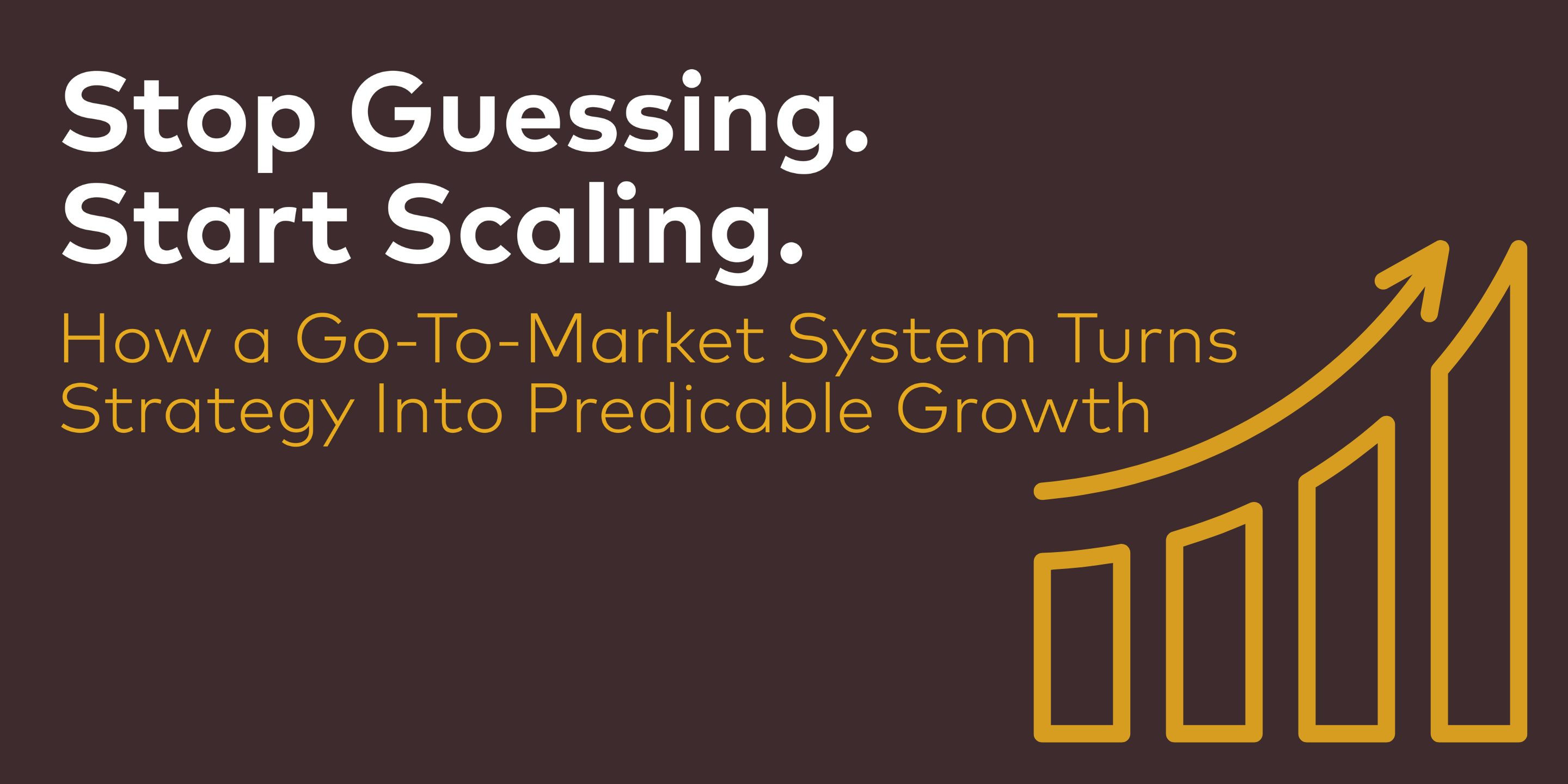
Stop Guessing. Start Scaling.
How a Go-To-Market System Turns Strategy Into Predictable Growth
If you’ve ever launched a new product, run a sales campaign, or built a brand from scratch — you know how easy it is to move fast and still miss the mark.
It’s not a lack of effort. It’s a lack of alignment.
Marketing does one thing. Sales pushes another. Leadership shifts goals halfway through Q2.
That’s where a go-to-market strategy—built as a system—makes all the difference.
More than a framework, a Go-To-Market (GTM) System is a complete operating model for growth. It aligns every department, sharpens every decision, and lays the foundation for scalable, measurable success.
Let's break it down.
What is the Go-To-Market System?
The GTM System is the operational core that connects corporate strategy, brand, marketing, and sales into a unified plan for growth. It transforms big ideas into clear actions and connects every motion to business impact.
Built around four phases, it provides the clarity, structure, and feedback loops needed to move from vision to execution, and from guessing to growing.
Phase 1: Strategy + Market Research
Where smart growth begins
Growth starts with understanding: revenue goals, operational metrics, customer behaviour, and market dynamics.
It begins by identifying what drives the business forward and what’s holding it back. That means analyzing internal data, testing assumptions, and pressure-testing strategy against real-world conditions.
The result is a data-backed Go-To-Market Plan that defines direction, focuses effort, and turns strategic intent into tangible next steps.
Phase 2: Brand Foundations
Make sure everyone’s speaking the same language
A misaligned brand creates confusion. A clear, consistent one builds recognition and trust.
This phase focuses on defining brand identity: the voice, visuals, and messaging that ensure every customer interaction feels cohesive and on point. When sales decks, landing pages, and social posts all tell the same story, the result is clarity — both inside and out.
Phase 3: Sales + Marketing Plans
Turn strategy into action — and action into ROI
Strategy is only as good as the plans it powers.
This phase is about translating goals into tactical, measurable programs. That includes building campaigns with defined KPIs, aligning teams across channels, and using data to prioritize what matters most.
Every action gets mapped. Every dollar gets tracked. No more guessing, just focused execution guided by a shared go-to-market strategy.
Phase 4: Execution + Metrics
Drive growth, adapt fast, and stay on course
This is where plans meet reality.
Execution requires structure, but also flexibility. With dashboards, sprint cycles, and responsive workflows, the GTM System evolves with the business. It turns feedback into iteration and insights into momentum.
The best systems don’t just launch. They learn, adapt, and improve over time.
How to Start
It always starts with strategy.
Before building campaigns, hiring new sales reps, or redesigning the brand — align on what matters. Clarity at this stage powers everything that follows.
What You'll Achieve
🔹 Predictable, scalable revenue
🔹 Alignment across teams and departments
🔹 Insight into what’s working (and what’s not)
🔹 A repeatable system for long-term growth
When teams align, strategy becomes execution, and execution becomes results.
Final Word
Scaling without alignment is like driving without a map. You might move fast, but where are you really going?
A Go-To-Market System provides the structure, clarity, and feedback loops that high-performing teams need to grow with confidence.
It’s not about doing more. It’s about doing the right things — and doing them together.
